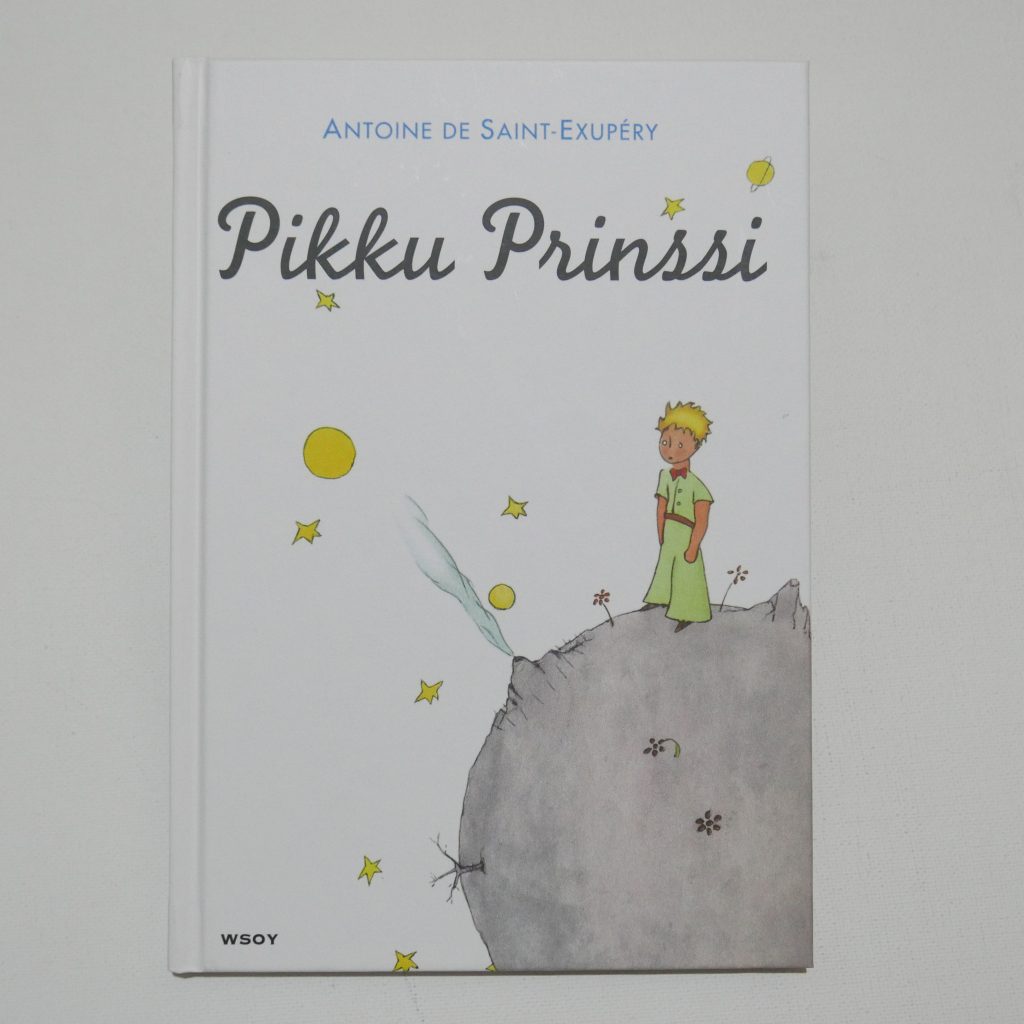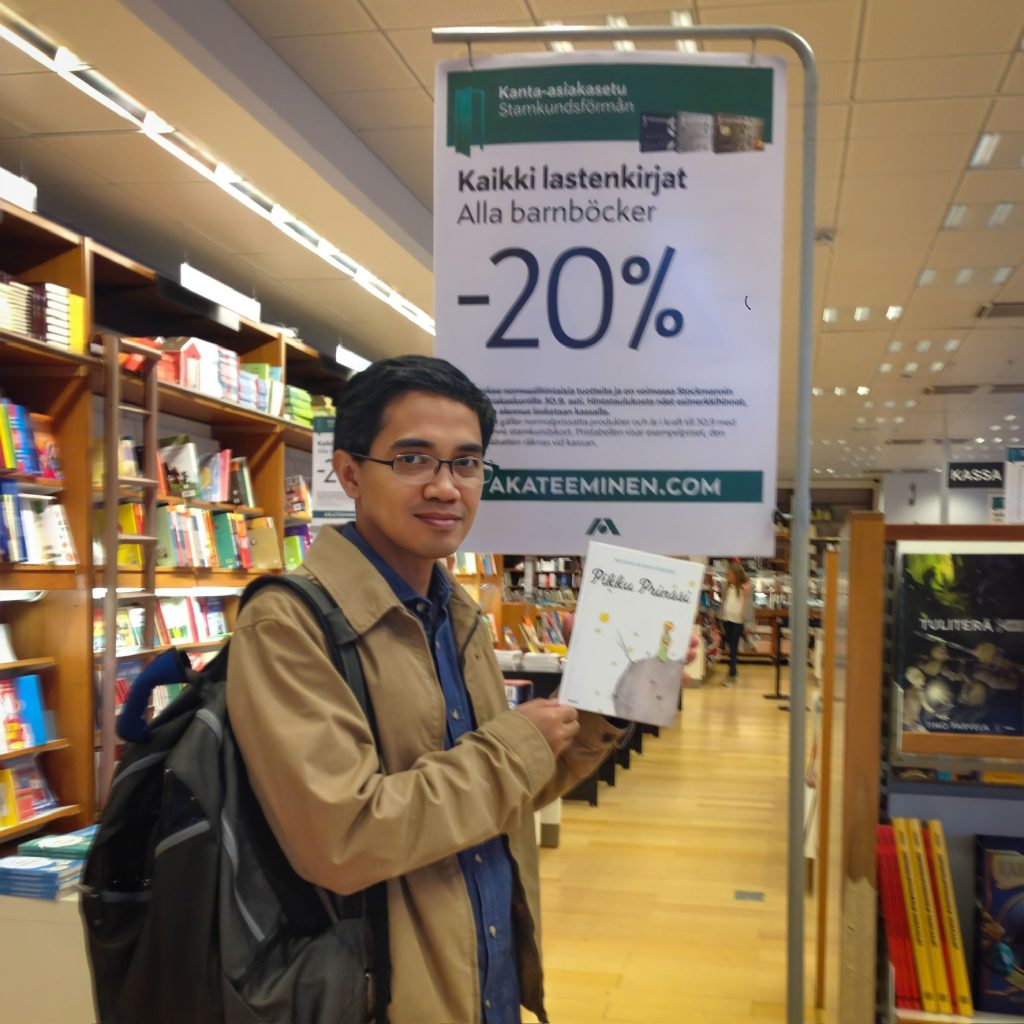
Pikku Prinssi, in Finnish.
I bought this book in Helsinki, Finland. But what is Finland? A Baltic or Scandinavian country? They speak two official languages here: Finnish & Swedish, besides other European languages. The name Finland is a Swedish name; in Finnish, it is Suomi. But Helsinki is a Finnish name; in Swedish, it is Helsingfors.
Finnish language (Suomi / Suomen Kieli) is an Uralic language of the Finnic branch. The Uralic family consists of about of 38 languages spoken by approximately 25 million people, including the languages of Hungarian, Finnish, and Estonian; also the languages of Erzya, Moksha, Mari, Udmurt, Sami, and Komi, etc spoken in northern regions of Scandinavia and the Russian Federation.

Belonging to the Uralic family rather than the Indo-European tree, Finnish is a linguistic cousin to Estonian and, more distantly, Hungarian, sharing agglutinative grammar, vowel harmony, and a case system that transforms meaning with elegant precision. With no gender, articles, or future tense, yet fifteen grammatical cases, Finnish may appear daunting to outsiders but reveals a crystalline internal consistency that reflects its speakers’ love of clarity, precision, and understatement. The language took shape from Finno-Ugric roots long before recorded history, absorbing influences from Baltic, Germanic, and Slavic neighbours while maintaining a fierce independence. It remained primarily oral until the 16th century, when Mikael Agricola translated the New Testament into Finnish, laying the foundation for a national literary tradition that would eventually nourish the patriotic fervour of Finnish independence in the 20th century.
Culturally, Finnish is more than a means of communication—it is a reflection of the Finnish soul: quiet, introspective, and deeply connected to nature. The language captures the unique rhythm of Finnish life, with compound words that reveal emotional nuances and a lexicon rich in terms for snow, forest, silence (hiljaisuus), and melancholy (kaiho). It thrives in literature—from the mythic Kalevala, the national epic that inspired Sibelius and Tolkien alike, to the existential prose of contemporary authors such as Sofi Oksanen. In music and everyday expression, Finnish maintains a stoic lyricism, often resisting embellishment in favour of depth and sincerity. Although surrounded by Scandinavian countries, Finland’s language sets it apart—mutually unintelligible with Swedish, Danish, or Norwegian, yet influenced by centuries of Swedish rule, during which Swedish remained the language of administration and culture. Even today, Swedish is a co-official language in Finland, and many Finns are bilingual, straddling two cultural spheres with quiet adeptness.
Finnish society prizes education, equality, and emotional reserve, qualities echoed in its language: it is deliberate, rich with metaphor, yet avoids superlative flourish. Speaking Finnish is an immersion into a worldview where words are chosen with care, silence is respected, and language itself becomes a landscape—dense, pristine, and quietly profound, like a forest mirrored in still water.


